 General
General  General Archive
General Archive  Top Cleveland Sports Figures, By the Numbers - #32
Top Cleveland Sports Figures, By the Numbers - #32
This is one installment in a team effort by The Cleveland Fan, highlighting the top local sports figures by jersey number. Please weigh in with your thoughts, in the Boards. As David Letterman would say, “For entertainment purposes only; please, no wagering.”
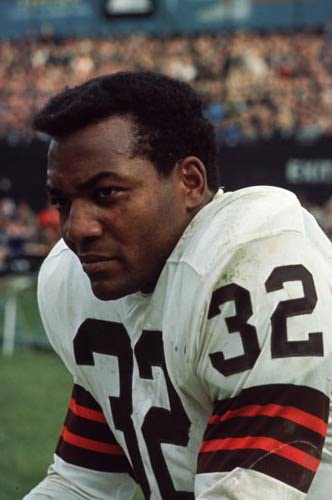 When this “By the Numbers” series for Cleveland athletes was conceived, there were several uniform numbers for which the selections were almost a foregone conclusion. There was also a handful of absolute no-brainers...and then there was Number 32.
When this “By the Numbers” series for Cleveland athletes was conceived, there were several uniform numbers for which the selections were almost a foregone conclusion. There was also a handful of absolute no-brainers...and then there was Number 32.
The number worn by James Nathaniel Brown for the Cleveland Browns is as iconic in the NFL as Ruth’s #3 is in baseball. This is not a phenomenon limited to Cleveland, as evidenced by articles such as this, in which Brown’s name is preceded by the words “the immortal”, or by any number of similar rankings.
Before Dwight Howard, Cam Newton or Shaquille O’Neal were born, Jim Brown had the nickname “Superman”. When he left football, still in his prime at 29, he owned the NFL single season rushing record, and career NFL records for rushing yards, total yards, rushing touchdowns and total touchdowns, among other marks...and he did it all in nine seasons of 12 or 14 games.
To this day, no other running back in NFL history has averaged over 100 yards (104.3) per game. Of the nine players to surpass his career touchdown record of 126 since he retired, none averaged more than one touchdown per game, as Brown did. He won the NFL rushing title in eight of his nine years in the league.
(It might be a good idea, before reading much further, to take a look at some video highlights of Jim Brown...just to refresh the memory of the amazing football player we’re talking about here. The first of the three links includes some footage of Brown at Syracuse, running, passing and kicking the football. The others are highlights of Browns games only: Video1 - Video2 - Video3 - Video4)
---
Standing Up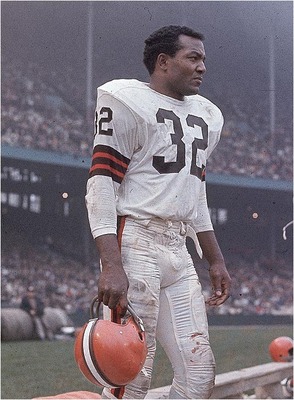 Nearly fifty years out from the end of his playing career, Brown is still recognized by legions of football people as the greatest player the game has ever seen. But Jim Brown made NFL history in other ways as well. By sheer force of will, and his refusal to be intimidated, he forever altered the way black players in the NFL perceived themselves, and were perceived by their teams and the league. It is impossible to speak separately of his years as an "activist" and those of his football career, because he was an activist throughout..
Nearly fifty years out from the end of his playing career, Brown is still recognized by legions of football people as the greatest player the game has ever seen. But Jim Brown made NFL history in other ways as well. By sheer force of will, and his refusal to be intimidated, he forever altered the way black players in the NFL perceived themselves, and were perceived by their teams and the league. It is impossible to speak separately of his years as an "activist" and those of his football career, because he was an activist throughout..
Brown broke through long standing taboos in the movie industry as well, bucking the entrenched racism both of Hollywood itself, and that of its consuming public, with the same defiance and unapologetic bravado that characterized everything else he did.
Jim Brown stood up for himself. As a Cleveland Browns player, he inspired and organized his teammates to stand up for themselves. It didn’t take long for this stance to earn him the enmity of Paul Brown, and later, of Art Modell.
Ever since, Brown has made a life’s work of advocating for the dignity, the rights, and the economic empowerment of American blacks, in particular young black men, by working at the grassroots level to make a difference. He saw his own success as a result of his determination and his work ethic, and he feels that self-sufficiency is the path to success for others as well. There is no place for feelings of victimhood, and no patience with excuses in Brown’s formula.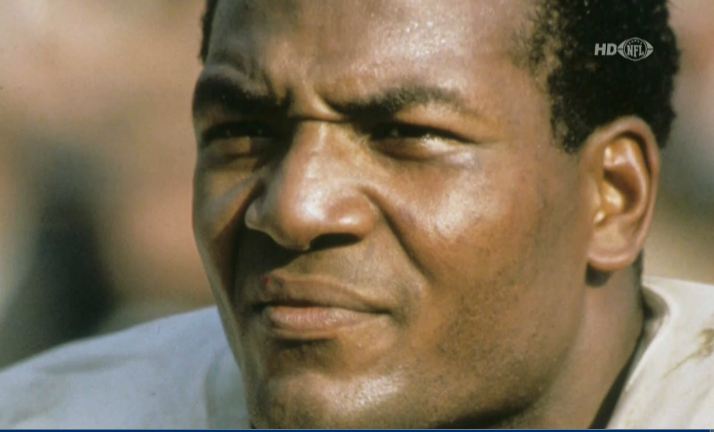
No athlete has been more willing to speak openly, candidly and consistently on the issue of race in our society than Jim Brown. That honest conversation on race that our politicians keep telling us we need to have, but never quite get around to...Brown has been engaging in for 50 years. 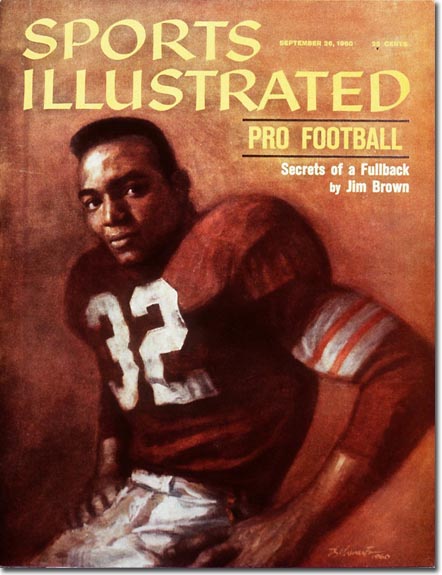 Jim Brown played football during a time of radical change and racial upheaval in American society, and he was habitually impatient with the pace of that change. And so he pushed.
Jim Brown played football during a time of radical change and racial upheaval in American society, and he was habitually impatient with the pace of that change. And so he pushed.
He was serious. He was outspoken. He was intelligent. Sometimes his pushing made him enemies. Perhaps there are examples of times in his life when Jim Brown apologized for something. I have not come across them.
Brown has had an on again-off again relationship with the Cleveland Browns organization over the years, depending on the attitudes of the regime du jour, and at the moment he is in good favor. There have been times when Cleveland has not been terribly proud of Jim Brown, and times when Brown has lashed out at the town that became his football home. But on balance, Jim Brown has done Cleveland proud.
And to his credit, Jim Brown is still pushing.
(The italicized quotations throughout, unless otherwise indicated, are the words of Jim Brown)
---
“I'm not interested in trying to work on people's perceptions. I am who I am, and if you don't take the time to learn about that, then your perception is going to be your problem.”
---
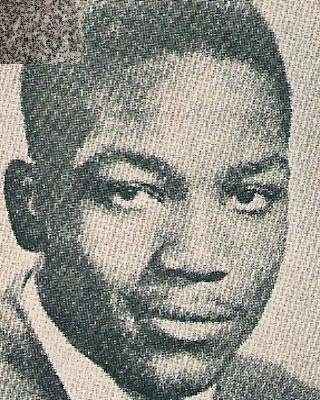 Jim Brown was born in St. Simons Island, on the coast of southern Georgia, in 1936, the son of Theresa and Swinton “Sweet Sue” Brown. Jim’s father abandoned the family within weeks of Jim’s birth, and never established a meaningful relationship with his son. Before Jim was two years old, his mother also left to move to New York to seek work, part of the great south to north migration that was ongoing at the time.
Jim Brown was born in St. Simons Island, on the coast of southern Georgia, in 1936, the son of Theresa and Swinton “Sweet Sue” Brown. Jim’s father abandoned the family within weeks of Jim’s birth, and never established a meaningful relationship with his son. Before Jim was two years old, his mother also left to move to New York to seek work, part of the great south to north migration that was ongoing at the time.
Jim was raised on St. Simons by his great-grandmother and other family members until his mother sent for him to join her in the Great Neck area on Long Island when he was eight years old. There he stayed with her in a one-room apartment attached to the residence of a family for whom she worked as a domestic. It was there in New York that Jim leaned to run, to fight, and to play ball.
Without a father in his life, and with his mother working long hours, Jim grew up on the streets, and came to rely on his fists as judge and jury in his frequent tussles. He joined up with a group of other tough kids from the area and they dubbed themselves the Gaylords. As Brown related it to biographer Mike Freeman, they were less a gang (they weren’t into crime or drugs) and more of a fight club.
Brown attended Manhasset High School on Long Island, and quickly began to stand out as a powerful, fast and versatile athlete. He starred in basketball, averaging a then-Long Island record 38 points a game. In football, he played both ways, at linebacker and running back, and dominated the competition. He picked up the game of lacrosse out of curiosity, and only the encouragement of a coach who spotted his talent got him to play the sport regularly.
The town of Manhasset welcomed and encouraged its black athletes, an attitude fostered by football coach Ed Walsh, who had spotted the young Jim Brown as a 5th grader and had become a trusted friend over the years. It was in the team’s road games in the surrounding communities where Brown was most often subjected to racist taunts from opposing players and fans. It wasn’t the first time he had felt the sting of hate for his skin color, but it was the most virulent and sustained.
---
The Syracuse Gambit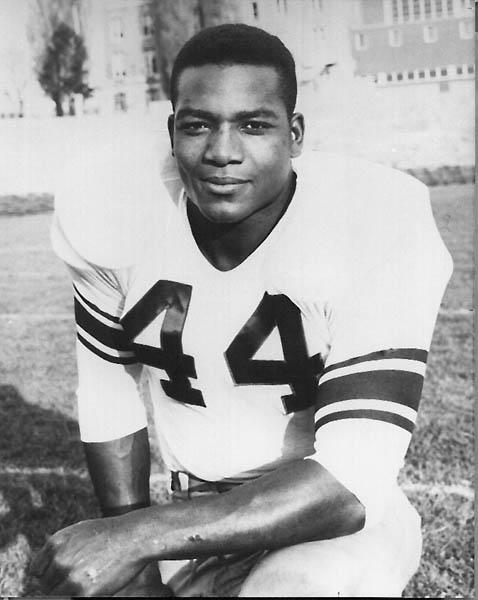 After averaging 15 yards a carry as a senior at Manhasset, and having decided to concentrate on football at the next level, Brown had dozens of offers from colleges. Walsh wanted him to play for Woody Hayes at Ohio State, but Brown was hesitant to go to school that far from home. There were several schools offering illegal payments to the promising football star, but Brown rejected the notion that he could be “bought”. (I should note here that I am relying heavily in this section on the interviews and reporting done by biographer Mike Freeman for the book linked above)
After averaging 15 yards a carry as a senior at Manhasset, and having decided to concentrate on football at the next level, Brown had dozens of offers from colleges. Walsh wanted him to play for Woody Hayes at Ohio State, but Brown was hesitant to go to school that far from home. There were several schools offering illegal payments to the promising football star, but Brown rejected the notion that he could be “bought”. (I should note here that I am relying heavily in this section on the interviews and reporting done by biographer Mike Freeman for the book linked above)
A local attorney named Kenneth Molloy had followed Brown’s high school exploits and wanted to persuade him to attend Molloy’s alma mater, Syracuse University. He met with Brown and convinced him that Syracuse was a program on the rise, and then misled Brown into thinking that he had the power to grant him a full scholarship if he agreed to play for the Orangemen. 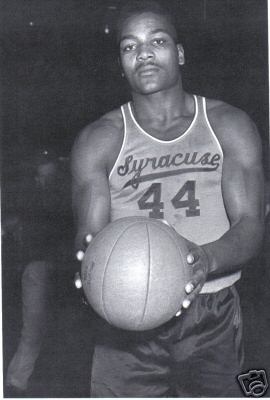 Brown gladly accepted the scholarship that didn’t exist, and Molloy set about to raise the money for Brown’s college costs by soliciting donations from Manhasset businessmen and local supporters of the high school team, all unbeknownst to Brown. Meanwhile at Syracuse, the football coach had never recruited Brown, and didn’t want any blacks on the football team.
Brown gladly accepted the scholarship that didn’t exist, and Molloy set about to raise the money for Brown’s college costs by soliciting donations from Manhasset businessmen and local supporters of the high school team, all unbeknownst to Brown. Meanwhile at Syracuse, the football coach had never recruited Brown, and didn’t want any blacks on the football team.
Molloy’s gamble was that once Brown got there and they saw him play, they would welcome him and offer him a scholarship. He turned out to be half right. Brown would eventually be granted a scholarship, thanks to the lobbying of his former coach Walsh and others, but he was never welcomed.
The Syracuse football program (and a good portion of the student body) had already proven itself inhospitable to black players, having just the year before hounded a talented black quarterback out of the school with an official campaign of discrimination (he was not allowed to eat or room with the team) and an unofficial campaign of racist taunts, threats and harassment by coaches and students alike. 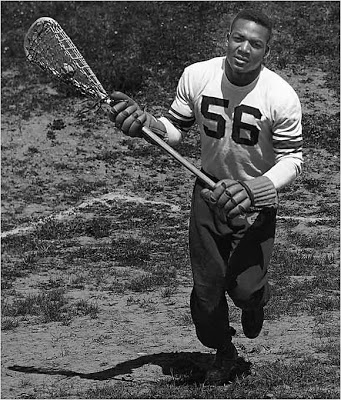 When Walsh met with Syracuse football coach Ben Schwartzwalder, the coach outlined a set of ten rules under which Brown would be permitted to play at the school. Among them was that Brown would not be permitted to date white women. The same restrictions on eating and rooming with the rest of the team were also on the list. Walsh was outraged at the demands, but didn’t disclose them to Brown. Brown would have a trio of advocates looking out for his best interests at Syracuse in Walsh, Molloy, and Roy Simmons, the Syracuse lacrosse coach, who had taken an interest in Brown and was soon to become one of his most trusted allies.
When Walsh met with Syracuse football coach Ben Schwartzwalder, the coach outlined a set of ten rules under which Brown would be permitted to play at the school. Among them was that Brown would not be permitted to date white women. The same restrictions on eating and rooming with the rest of the team were also on the list. Walsh was outraged at the demands, but didn’t disclose them to Brown. Brown would have a trio of advocates looking out for his best interests at Syracuse in Walsh, Molloy, and Roy Simmons, the Syracuse lacrosse coach, who had taken an interest in Brown and was soon to become one of his most trusted allies.
Jim Brown enrolled at Syracuse then, completely unaware that he was not a scholarship athlete...completely unaware that he had a blatantly discriminatory set of rules governing his conduct, and completely unwelcomed by the football team on which he would be the only black player. Everything he accomplished at Syracuse must be understood in the context of that backdrop.
---
“It seemed to me that everything was upside-down at Syracuse. In high school I had known nothing but fair treatment. Now I had advanced to the world of higher education, and I felt that I had promptly been viewed as a potential troublemaker and threat to Caucasian women. Naturally enough, I got my back up. I bristled. I hadn’t come to Syracuse to be treated like an enemy in the ranks.”
---
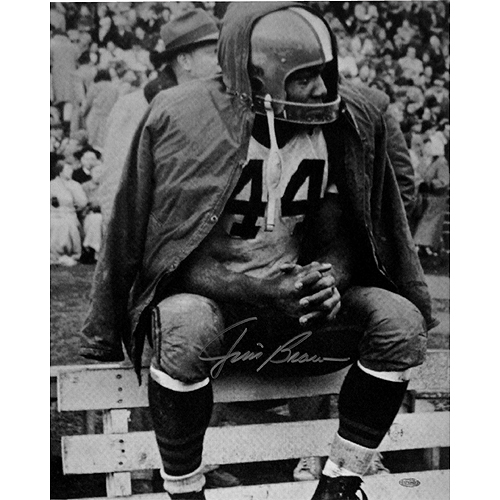 As the Syracuse football coaches did everything they could to discourage Brown on the practice fields, benching him for every fumble and punishing him for the smallest mistake, the young man grew closer to Roy Simmons, the lacrosse coach. He later admitted he went out for the lacrosse team purely out of his affection for Simmons and the way the coach had counseled him through the tough early days in college, when he was on the verge of leaving school several times.
As the Syracuse football coaches did everything they could to discourage Brown on the practice fields, benching him for every fumble and punishing him for the smallest mistake, the young man grew closer to Roy Simmons, the lacrosse coach. He later admitted he went out for the lacrosse team purely out of his affection for Simmons and the way the coach had counseled him through the tough early days in college, when he was on the verge of leaving school several times.
Brown rode the bench in football until midway through his sophomore year, getting his shot on the field only because two players on the depth chart ahead of him suffered injuries. Soon, even the coaches’ contempt for Brown couldn’t keep him from the field. He was an overpowering physical specimen at 6’ 2”, and 230 lbs, and before he was finished playing football at Syracuse, he was a first team All-American, and every NFL team knew who he was. 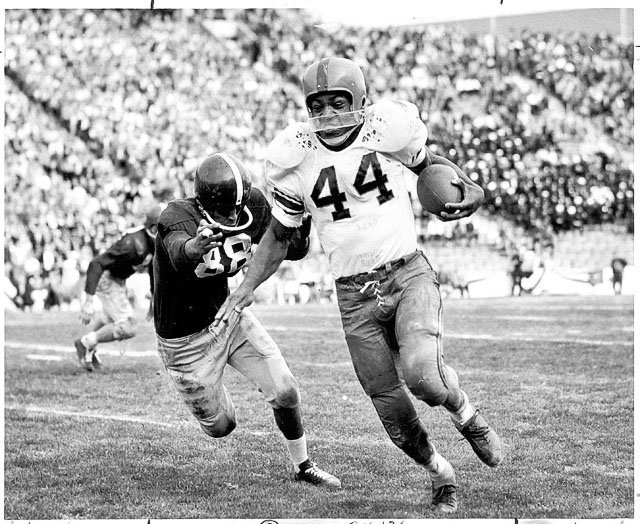 Coach Simmons had also turned Brown into an All-American in lacrosse, and it was his athletic versatility that was so attractive to the pro football scouts. Brown dominated in a sport played, then as now, predominantly by wealthy east coast white boys, and it was in his lacrosse matches that he was subjected to some of the ugliest of racist epithets from opposing players. It was at Syracuse that Jim Brown learned how to rise above the hateful treatment he received, in part by channeling it into a fierce competitive drive and the will to beat, if not humiliate the opponent. (Here’s a short video clip of Brown on the lacrosse field)
Coach Simmons had also turned Brown into an All-American in lacrosse, and it was his athletic versatility that was so attractive to the pro football scouts. Brown dominated in a sport played, then as now, predominantly by wealthy east coast white boys, and it was in his lacrosse matches that he was subjected to some of the ugliest of racist epithets from opposing players. It was at Syracuse that Jim Brown learned how to rise above the hateful treatment he received, in part by channeling it into a fierce competitive drive and the will to beat, if not humiliate the opponent. (Here’s a short video clip of Brown on the lacrosse field)
Brown finished fifth in the Heisman Trophy voting, as the award went to Paul Hornung of Notre Dame, the slight due in part to what was recognized as a media bias against players from the east. But Brown would become the only player ever to be elected to the Hall of Fame in college football, professional football and lacrosse.
---
“Every other college athlete was compared to Jim Brown after Jim Brown.....and it will always be that way” - Ernie Accorsi - Browns General Manager
---
“He is the best player in the country, by far” - Browns scout Dick Gallagher, in a report on Syracuse running back Jim Brown
---
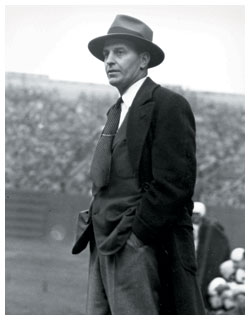 Paul Brown wanted to draft a quarterback in 1957. Three different players had started games under center in 1956 for the Browns, the first year after Otto Graham’s retirement, and there were a couple of good ones available that year. The Browns lost a coin flip with the Steelers for the 5th pick, and by the time Brown’s pick came around, Stanford’s John Brodie had been taken, and the Steelers grabbed Purdue’s Len Dawson just ahead of Cleveland’s selection.
Paul Brown wanted to draft a quarterback in 1957. Three different players had started games under center in 1956 for the Browns, the first year after Otto Graham’s retirement, and there were a couple of good ones available that year. The Browns lost a coin flip with the Steelers for the 5th pick, and by the time Brown’s pick came around, Stanford’s John Brodie had been taken, and the Steelers grabbed Purdue’s Len Dawson just ahead of Cleveland’s selection.
Brown would settle for Milt Plum in the second round for his QB, and he went with the advice of his scout at No. 6 with the running back out of Syracuse. (Halfback Jon Arnett of USC, taken by the Rams at No. 2, would become the Sam Bowie of his era)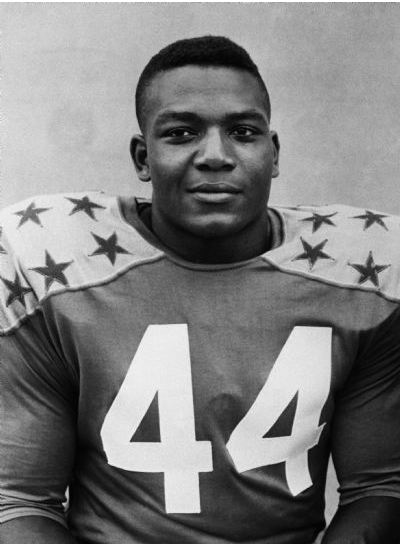
Even as a rookie, it was evident that Brown’s relationship with Paul Brown was going to be difficult. All players under the Paul Brown system were supposed to just shut up and play. Black players in the NFL at that time were expected to be docile and quiet. Jim Brown did not know from docile. He was opinionated and vocal. With Paul Brown it was all about team...led by one man. Jim Brown was an individual’s individual, content to be controlled by no man. It was a recipe for trouble from the beginning.
---
“Make sure when anyone tackles you he remembers how much it hurts”
---
“If I ever coach one day, I would do it 180 degrees differently than Paul”
---
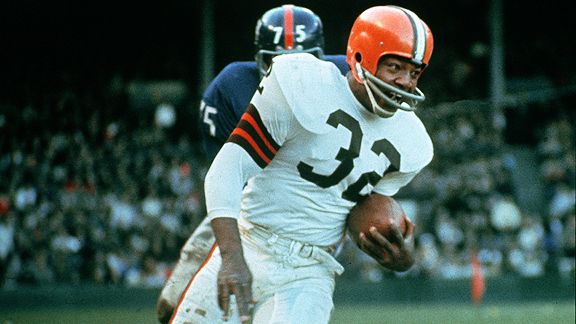 The respect Jim Brown earned around the NFL as a rookie was quickly turning to awe as his career continued. After 972 yards rushing and 10 touchdowns in his first season, Brown erupted for 1,527 yards rushing and 18 scores as a second-year player in 1958. Along the way he was developing a reputation not just as a great player, but as a tough guy.
The respect Jim Brown earned around the NFL as a rookie was quickly turning to awe as his career continued. After 972 yards rushing and 10 touchdowns in his first season, Brown erupted for 1,527 yards rushing and 18 scores as a second-year player in 1958. Along the way he was developing a reputation not just as a great player, but as a tough guy.
Brown hated to display any sign of weakness. He refused to take a drink of water at practices. He rarely showed up in the training room, but if he did, it was early in the morning when no other players were around to see it. He refused to wear any but the required pads under his uniform. Brown played one entire season with a broken toe, and he routinely hid injuries that had the potential to keep him off the field. He also absorbed many, many cheap shots in games, from opponents with no other clue about how to slow him down.
In nine seasons, Jim Brown never missed a game.
---
“I have never seen an athlete be so physically abused, and still play at such a high level as Jim Brown. Things were done to Jim that today would lead to players getting arrested” - Art Modell
---
![]()
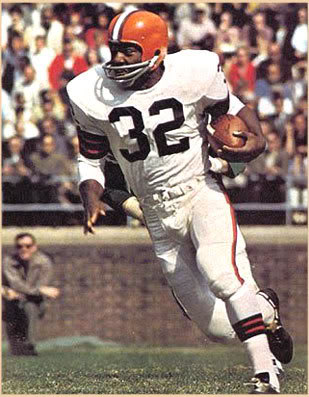 Brown retaliated just twice in his career to the late hits and cheap shots he continually took from opponents. Once was in response to a vicious elbow to the head after a play was over that left him stunned and disoriented. He told his offensive lineman to allow the offending player into the backfield on a subsequent play, and proceeded to take him to the ground with a kick to the stomach. Brown was ejected from the game on both occasions.
Brown retaliated just twice in his career to the late hits and cheap shots he continually took from opponents. Once was in response to a vicious elbow to the head after a play was over that left him stunned and disoriented. He told his offensive lineman to allow the offending player into the backfield on a subsequent play, and proceeded to take him to the ground with a kick to the stomach. Brown was ejected from the game on both occasions.
The Organizer
Jim Brown had assumed a role as a leader in the locker room early in his career. His partying and womanizing were to become the stuff of legend, and they were a headache for team management, but it was the pride and assertiveness that Brown instilled in the team’s black players that gave Paul Brown...and the league’s owners...just as much reason for concern that they were losing control.
Brown organized the team’s black players. They sat together at meals...just as they were often forced to segregate in hotels or restaurants on the road. But as a group they decided to tolerate no discrimination in public. As a group, Brown and the other black players on the team partied hard, chased women, and carried on, but only in private. Brown insisted that they maintain a serious public persona, always polite and respectful with the media and fans.
---
“In a matter of just a few years, despite his newness to pro football, Brown would organize the black players on the Browns into a politically-active group that was the most advanced and organized in all of sports. They were a group of rabble-rousing, woman-chasing partyers whose influence and organizational skills would spread across the league from team to team. There was nothing in professional sports like what Brown had begun.” - Mike Freeman in Jim Brown: A Hero’s Life
---
“Brown’s message was ‘I’m a man. Don’t disrespect me.’ Black players in the NFL were not saying that then. As black players were signed by the Browns their attitude changed overnight, they became more proud and defiant. That was Jim. We set the tone across the league for all black players” - teammate Bobby Mitchell
---
“I do not crave the white man’s approval. I crave only the rights I am entitled to as a human being. The acceptance of the Negro in sports is really an insignificant development that warms the heart of the Negro less than it does that of the white man, who salves his troubled conscience by telling himself, ‘Isn’t it wonderful that Negroes and whites are out there playing together’”
---
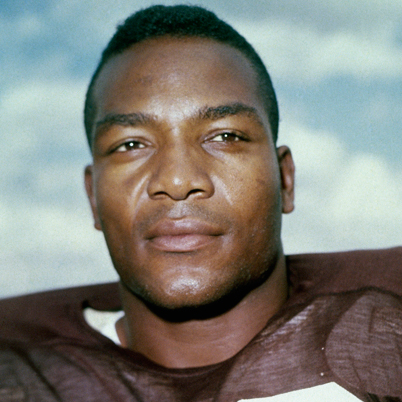 Paul Brown had been among the first to break the color line in the NFL, signing Bill Willis and Marion Motley before many other teams allowed black players on their rosters, but Brown had to adhere to the NFL’s unwritten and publicly unacknowledged limit of 10 black players on a team. Most teams also made sure to keep an even number of black players on the roster so they could room them together on the road and avoid having white and black players share a room.
Paul Brown had been among the first to break the color line in the NFL, signing Bill Willis and Marion Motley before many other teams allowed black players on their rosters, but Brown had to adhere to the NFL’s unwritten and publicly unacknowledged limit of 10 black players on a team. Most teams also made sure to keep an even number of black players on the roster so they could room them together on the road and avoid having white and black players share a room. 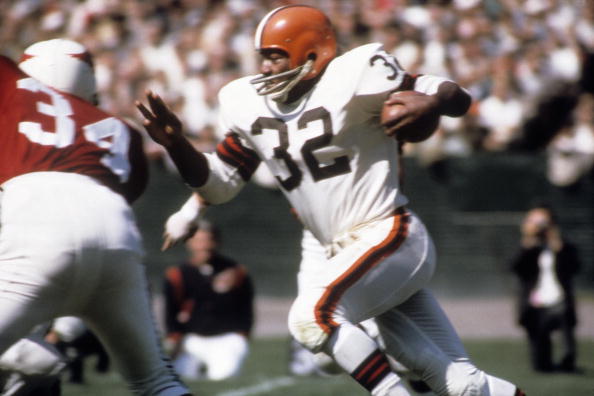 Paul Brown was none too happy about the racial division on his team that was one consequence of Jim Brown’s activism, and their relationship, which had seen them barely tolerating each other for some time, was becoming unsalvageable. For Paul Brown to place the blame on one black player for “dividing” a team that was already systematically segregated by race strikes one today as bizarre, but Brown saw his authority over the whole enterprise being eroded, and he needed scapegoats.
Paul Brown was none too happy about the racial division on his team that was one consequence of Jim Brown’s activism, and their relationship, which had seen them barely tolerating each other for some time, was becoming unsalvageable. For Paul Brown to place the blame on one black player for “dividing” a team that was already systematically segregated by race strikes one today as bizarre, but Brown saw his authority over the whole enterprise being eroded, and he needed scapegoats.
Jim Brown talked about leaving the Browns and quitting football long before he actually did it. As early as 1960 he did nothing to squash rumors that he was considering a career in boxing, as a negotiating ploy when he was trying to get a new contract. Paul Brown was over a barrel and he knew it. In 1960 he signed Brown to a two-year contract extension that made him the league’s highest paid player, at $30,000 a year. Shortly thereafter, a new owner arrived on the scene to complicate things.
And Art Makes Three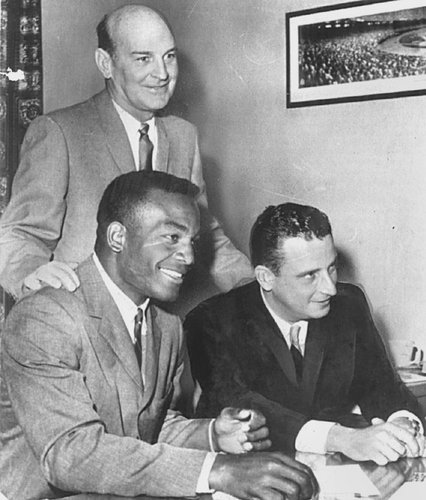 The massive egos of Jim Brown and Paul Brown had managed to coexist for several years, even as their personal distaste for each other had simmered just below the surface and largely out of public view. But when a third oversized ego came on the scene for the Browns in 1961, in the person of the handsome and glib ad man owner, Arthur B. Modell, the mix became too volatile to keep from boiling over.
The massive egos of Jim Brown and Paul Brown had managed to coexist for several years, even as their personal distaste for each other had simmered just below the surface and largely out of public view. But when a third oversized ego came on the scene for the Browns in 1961, in the person of the handsome and glib ad man owner, Arthur B. Modell, the mix became too volatile to keep from boiling over.
By the early 60’s, the NFL was adjusting to Paul Brown’s once innovative messenger-guard play-calling system. Opposing teams began changing the defensive formations before the snap in the knowledge that Brown’s rigid system didn’t allow the quarterback to change plays at the line. The Browns' offense was struggling, and the offensive players were frustrated with it, and demanding that the old dog learn some new tricks. 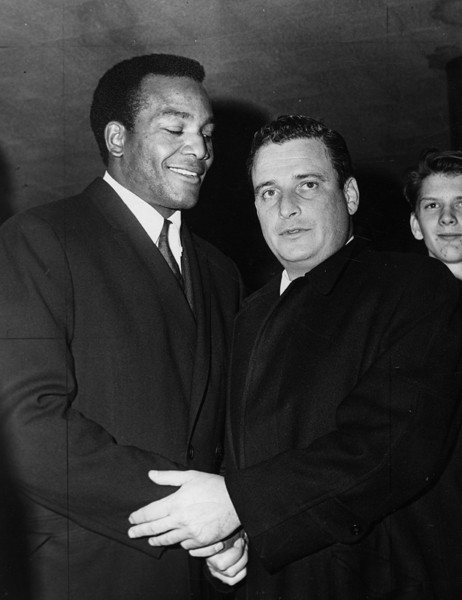 Modell had signed Paul Brown to a new 10-year contract soon after buying the team, giving Brown the feeling that he had total control of the football side of the operation. That turned out to be an illusion, because Modell couldn’t keep his hands off the team.
Modell had signed Paul Brown to a new 10-year contract soon after buying the team, giving Brown the feeling that he had total control of the football side of the operation. That turned out to be an illusion, because Modell couldn’t keep his hands off the team.
Modell exploited the growing frustration with Paul Brown among his players, developing his own personal relationships with several of them, but most importantly with Jim Brown. He supported the idea that Jim would have his own radio show, and Brown used that platform to criticize Paul Brown’s play-calling and offensive schemes in public.
Modell made a conspicuous practice of taking favored players out to eat in Cleveland restaurants, and would lend a sympathetic ear to their complaints about their head coach, all of which infuriated Paul Brown. Modell even criticized the coach himself, within earshot of the media, word of which invariably got back to Brown.
When word got out that Paul Brown was considering trading his star running back, Jim Brown went to Modell and got a no-trade clause inserted into his contract. Undermining his coach in that way created a rift between Modell and Paul Brown that was irreparable. Jim Brown and a group of mostly offensive players would soon force Modell’s hand.
The group planned to meet with Paul Brown near the end of the 1962 season to plead with him to open up the outmoded offense. Modell got word of the meeting and canceled it, but Jim Brown and several other key offensive players let Modell know that if Paul Brown didn’t make some changes, they would demand publicly to be traded. Modell fired Brown that December.
The firing of Paul Brown cannot be laid at the feet of Jim Brown. Modell would tell Brown when he fired him that he knew the Browns “could never be my team” as long as Paul Brown was around. In fact, Modell has taken most of the heat for the decision over the years, but clearly Jim Brown’s clash with Paul had a lot to do with it.
---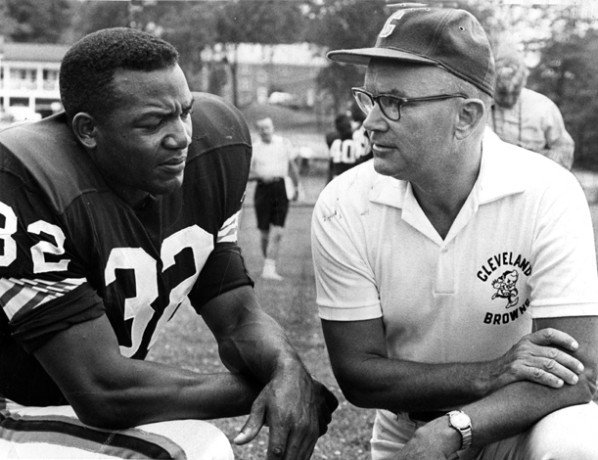 Brown played much of the 1962 season with a painful wrist injury, and it was the only year of his career in which he didn’t win the league rushing title. Jim Taylor of the Packers ran away with it at 1,474 yds, as Brown finished fourth in the league with 996 yards and 18 total touchdowns. But if anyone thought he was on the decline, 1963 would be a definitive answer.
Brown played much of the 1962 season with a painful wrist injury, and it was the only year of his career in which he didn’t win the league rushing title. Jim Taylor of the Packers ran away with it at 1,474 yds, as Brown finished fourth in the league with 996 yards and 18 total touchdowns. But if anyone thought he was on the decline, 1963 would be a definitive answer.
Under new head coach Blanton Collier, a man he came to like and respect, Brown flourished, and set the NFL season rushing record with 1,835 yards. He led the league again in rushing TD’s, and averaged a whopping 6.4 yards per carry. He won the NFL MVP (UPI) and the Bert Bell Award as NFL Player of the Year. Only a championship eluded him...and that not for long.
---
“We’re going to kick the shit out of these motherfuckers” - Brown to teammate John Wooten, on the way to the team hotel before the 1964 NFL Championship Game
---
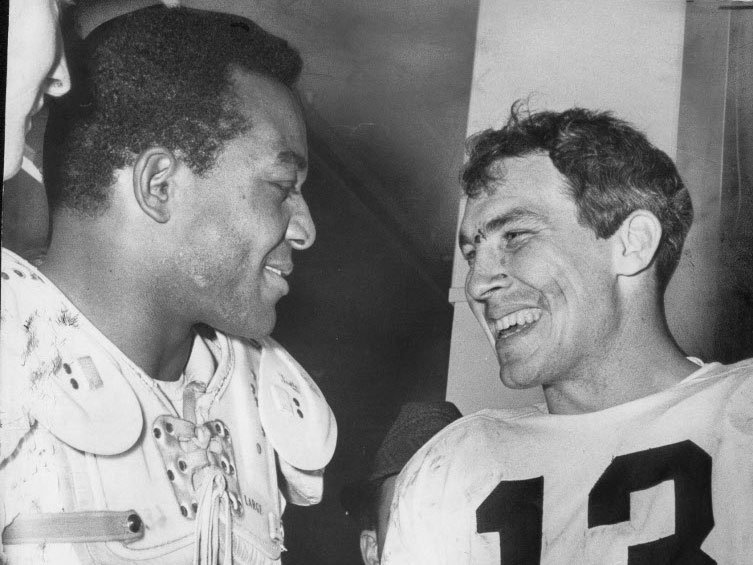 In that glorious campaign of 1964, Brown would rush for 400 fewer yards than his record year of ‘63, but still win the rushing title for the seventh time, with 1,446 yards. The offense was more balanced as quarterback Frank Ryan, and receivers Gary Collins and rookie Paul Warfield and tight end Johnny Brewer took on more of the load. Brown caught 36 passes himself, for an additional 340 yards and two receiving TD’s. In the title game shutout of the Colts, Brown rushed for 114 yards on 27 carries, helping Cleveland eat up the clock once they broke open the scoreless contest after halftime. Highlights of 1964 NFL Championship Game
In that glorious campaign of 1964, Brown would rush for 400 fewer yards than his record year of ‘63, but still win the rushing title for the seventh time, with 1,446 yards. The offense was more balanced as quarterback Frank Ryan, and receivers Gary Collins and rookie Paul Warfield and tight end Johnny Brewer took on more of the load. Brown caught 36 passes himself, for an additional 340 yards and two receiving TD’s. In the title game shutout of the Colts, Brown rushed for 114 yards on 27 carries, helping Cleveland eat up the clock once they broke open the scoreless contest after halftime. Highlights of 1964 NFL Championship Game
---
“It’s the biggest thrill of my career. I’ve had better days as an individual, but this is the most satisfying of all” - After the Browns 27-0 win in NFL title game in 1964
---
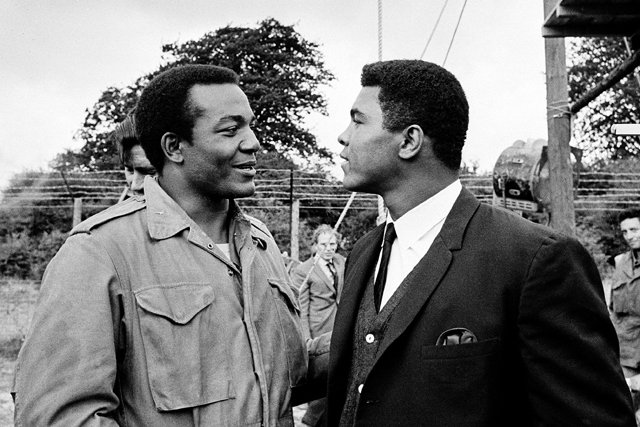 Jim Brown’s two post-football careers were both starting to divert his interests more and more, just as his team and his talent were peaking in the NFL. In 1963 he formed the Negro Industrial Economic Union (later renamed the Black Economic Union) which helped finance start-up businesses for black entrepreneurs. The NIEU got started in Cleveland, but before long, Brown had established offices in other major cities, having enlisted help from other celebrity athletes like Bill Russell and Wilt Chamberlain, and other NFL stars like Willie Davis. Brown befriended Cassius Clay after his title fight win over Sonny Liston in ‘64, and the two bonded as partners in the cause of civil rights, and remained close for years.
Jim Brown’s two post-football careers were both starting to divert his interests more and more, just as his team and his talent were peaking in the NFL. In 1963 he formed the Negro Industrial Economic Union (later renamed the Black Economic Union) which helped finance start-up businesses for black entrepreneurs. The NIEU got started in Cleveland, but before long, Brown had established offices in other major cities, having enlisted help from other celebrity athletes like Bill Russell and Wilt Chamberlain, and other NFL stars like Willie Davis. Brown befriended Cassius Clay after his title fight win over Sonny Liston in ‘64, and the two bonded as partners in the cause of civil rights, and remained close for years.
A few years later, when Clay, now Muhammed Ali, was being widely vilified for his refusal to be drafted and serve in Vietnam, Brown organized a public show of support for Ali, bringing Russell, Chamberlain, Lew Alcindor and others together to support their common friend at a time when it was a highly unpopular thing to do.
---
“You cannot get me to be disloyal to a friend. You just can't do it. Loyalty is a part of what I live by. I didn't say I was going to be loyal to my friend because he was right. I'm going to be loyal to my friend because he's my friend” - Esquire interview - 2008
---
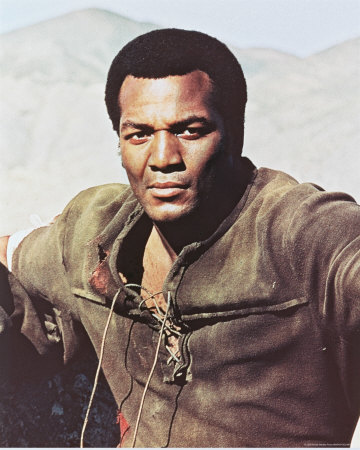 1964 was also the year that Jim Brown’s first movie came out. Rio Conchos opened in October of the Browns’ championship year. It was a shoot-em-up western, with Brown in the role of a cavalry officer, and was a project that Brown stumbled into almost by accident. He had been playing a golf tournament at Pebble Beach, was approached and asked to read for a movie, and only reluctantly agreed to go along with it. More movie roles followed, and Brown came to embrace the attention, the cash and the Hollywood lifestyle.
1964 was also the year that Jim Brown’s first movie came out. Rio Conchos opened in October of the Browns’ championship year. It was a shoot-em-up western, with Brown in the role of a cavalry officer, and was a project that Brown stumbled into almost by accident. He had been playing a golf tournament at Pebble Beach, was approached and asked to read for a movie, and only reluctantly agreed to go along with it. More movie roles followed, and Brown came to embrace the attention, the cash and the Hollywood lifestyle.
---
“Hollywood had me pegged as some new sex symbol. In many of my films I started doing love scenes. If I found my leading lady unattractive, physically or spiritually, love scenes for me were uncomfortable. If she was pretty, had some heart, I welcomed love scenes. Actors talk about being professional. They say you can kiss a person, hold a person, not feel a thing. Man, if that person you’re kissing and holding is fine, love scenes can be dangerous. God did not make the human body so you could talk to it, tell it exactly how to act.” - Ebony magazine - 1989
---
Jim Brown’s football career showed no signs of slowing down in the 1965 season when he won an unprecedented eighth league rushing title with 1,544 yards, averaging 110.3 yards per game. But at the same time, Hollywood was beating down his door with offers, and Brown was in London filming a new movie called The Dirty Dozen in the spring and summer of 1966, just as Art Modell’s Browns were starting training camp. That’s when push came to shove, and Modell learned that you don’t give an ultimatum to Jim Brown.
---
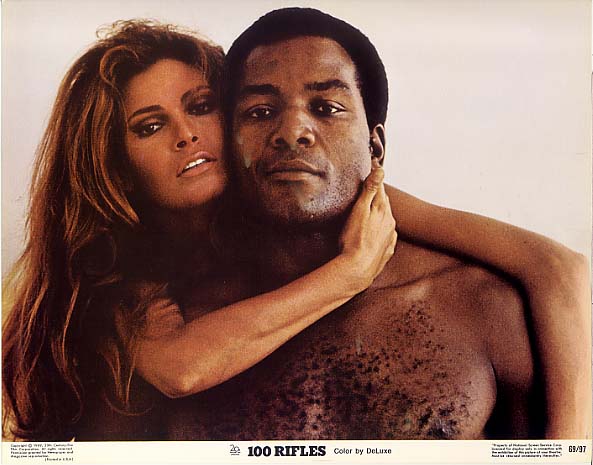 “To leave at twenty-nine years old, MVP, having won the championship in '64 and played for it in '65. To go into the movies and break the color barrier and be in a sex scene with Raquel Welch. To get to be in The Dirty Dozen with some great actors. To make more money in one year than you damn near made in nine years of football. Everything about it was ingenious.” - Esquire interview - 2008
“To leave at twenty-nine years old, MVP, having won the championship in '64 and played for it in '65. To go into the movies and break the color barrier and be in a sex scene with Raquel Welch. To get to be in The Dirty Dozen with some great actors. To make more money in one year than you damn near made in nine years of football. Everything about it was ingenious.” - Esquire interview - 2008
---
The filming of The Dirty Dozen was running behind schedule, and Jim Brown was a no-show for Browns training camp in the summer of ‘66. Modell announced through the media that he would fine Brown $100 for each day of camp he missed, and there were reports that the threatened fines were actually much steeper than that. 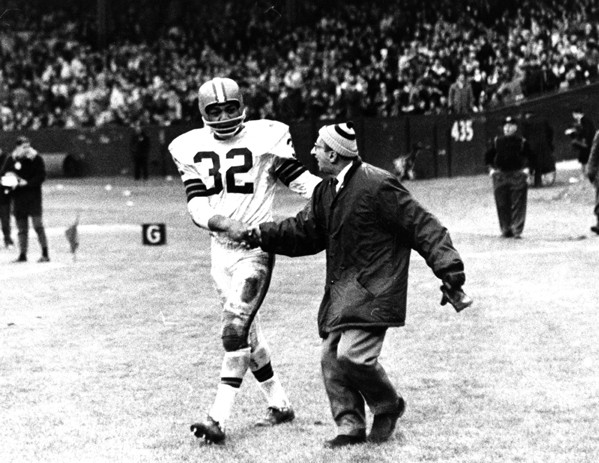 Hardly anyone in Cleveland felt that the situation couldn’t and wouldn’t be worked out amicably. Brown was the league’s highest paid player...surely he wasn’t prepared to walk away from the NFL in his prime, at 29. But Modell, the media and many fans of the Browns had miscalculated. Modell had insulted Brown with his public ultimatum, and Brown had finally made up his mind. He was done with football. He sought out Plain Dealer columnist Hal Lebowitz to release a statement to the Browns and the public. It read:
Hardly anyone in Cleveland felt that the situation couldn’t and wouldn’t be worked out amicably. Brown was the league’s highest paid player...surely he wasn’t prepared to walk away from the NFL in his prime, at 29. But Modell, the media and many fans of the Browns had miscalculated. Modell had insulted Brown with his public ultimatum, and Brown had finally made up his mind. He was done with football. He sought out Plain Dealer columnist Hal Lebowitz to release a statement to the Browns and the public. It read:
“I am leaving the Browns with an attitude of friendliness and cooperation. Once I return to Cleveland, I’ll do everything I can to help the Browns - other than playing. The Browns have a great organization and great team. One man won’t make the difference. I leave with great respect for Blanton and Art. I’ll help them any way I can.”
---
As much as Jim Brown’s immense athletic talents and his community good works have been celebrated, he has long been dogged by criticism for his attitudes toward, and treatment of the women in his life, whose numbers were legion. As stated earlier, Brown’s exploits with women during and after his time with the Browns were legendary, and examples of Brown being accused of violence against women are not hard to find. Any profile of Brown that omitted mention of it would not be a fair one.
Brown’s own public statements through the years concerning his views about women run from the chauvinistic right up to the edge of misogyny. He admits to having slapped women and fought with women. Again, a Google search on “Jim Brown apologizes” comes up pretty empty, and he has never cared much what anyone else thinks about it anyway, but he is certainly a legitimate target for criticism on that score, and no amount of other good works excuse it. His wife Sue finally divorced him in the late 60’s after enduring his open and serial infidelities for many years.
That said, the most serious charges of violence that have been levied against Brown have never resulted in his conviction. An accusation of rape in Whitehall, Ohio in 1965 resulted in no charges being filed. A trial on a charge of battery against Brenda Ayres from a motel incident in Cleveland’s University Circle in 1966 resulted in an acquittal.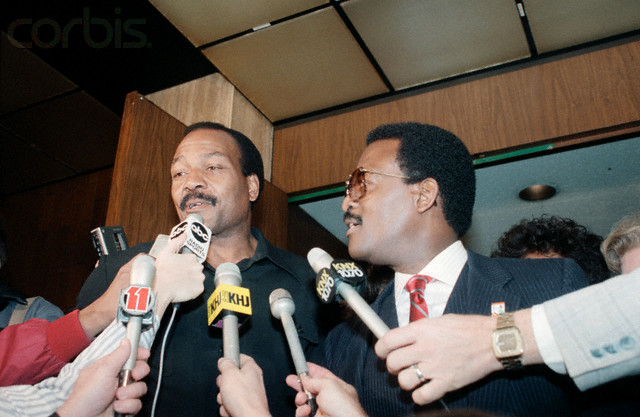 And the most infamous “offense”, the events of the night Brown’s girlfriend Eva Bohn-Chin wound up under a second floor balcony with serious injuries after a fight with Brown which drew police to the scene, also never resulted in any charges being filed against him. Brown contended that Bohn-Chin tried to climb down off the balcony to evade the arriving police, and fell, separating her shoulder and sustaining other injuries. She gave inconsistent accounts at different times after the incident, but refused to press charges in the end.
And the most infamous “offense”, the events of the night Brown’s girlfriend Eva Bohn-Chin wound up under a second floor balcony with serious injuries after a fight with Brown which drew police to the scene, also never resulted in any charges being filed against him. Brown contended that Bohn-Chin tried to climb down off the balcony to evade the arriving police, and fell, separating her shoulder and sustaining other injuries. She gave inconsistent accounts at different times after the incident, but refused to press charges in the end.
What is beyond dispute is that Jim Brown had a terrible temper, and was known to become verbally abusive and/or physically violent in encounters with both men and women. He was incapable of conceding most any argument...ever. He took a shovel to his wife’s car in the garage after an argument in 1999. There were traffic stops and arrests, some of which were almost certainly the result of Brown driving while black, in a shiny red Cadillac convertible. Other times, he appeared to have been guilty of road rage. In every case, legitimate or not, it was big news because it was Jim Brown.
Who knows what changes the man has gone through since those days, but one quote from a 2008 interview with Esquire magazine offers a hint that he is not the same man he was...
---
When you understand sex, you understand that your fidelity is the greatest thing you have. It's yours, not hers.
---
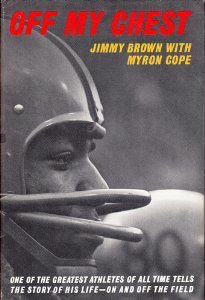 Brown’s 1964 memoir Off My Chest was something of a sensation, mostly because few athletes, and virtually no black athletes, had ever written this kind of a frank and personal statement of their beliefs and opinions. Paul Brown came in for heavy criticism in the book, and Brown weighed in on a variety of topics that he hadn’t discussed much in public before. Most prominent among them, and at the time most controversial, was the socioeconomic condition of blacks in American society, a concern that would become a major focus of the rest of Jim Brown’s life.
Brown’s 1964 memoir Off My Chest was something of a sensation, mostly because few athletes, and virtually no black athletes, had ever written this kind of a frank and personal statement of their beliefs and opinions. Paul Brown came in for heavy criticism in the book, and Brown weighed in on a variety of topics that he hadn’t discussed much in public before. Most prominent among them, and at the time most controversial, was the socioeconomic condition of blacks in American society, a concern that would become a major focus of the rest of Jim Brown’s life.
In his community work, mostly focused on young black males, Brown stressed self-reliance and a rejection of victimhood. Economic opportunity was all these young people needed, Brown contended, and his organization was there to provide it. What he didn’t want to hear was that their condition was someone else’s doing.
Brown would often cite the examples of the Korean communities, or the Jewish communities, that built themselves up, first into an economic force, and ultimately into a political force. He has never sought to let white society off the hook for their mistreatment of blacks, but neither has he favored accepting charity born of guilt as the solution.
---
It's the biggest crutch we can ever have: I'm a victim because of what white folks did. I was a slave. I didn't get a fair shot when I went for the job that they didn't give to me. I look and say, Look how you look, motherfucker. I wouldn't hire you myself. So let's deal with the fundamentals, man. Get yourself together and then we can fight the battle.
---
You can't help a motherfucker sitting on his ass, crying the blues.
---
A liberal is arrogant enough to think he can do you a half-assed favor. He is superior enough to think he can give you something that you don't deserve. A liberal will cut off your leg so he can hand you a crutch.
---
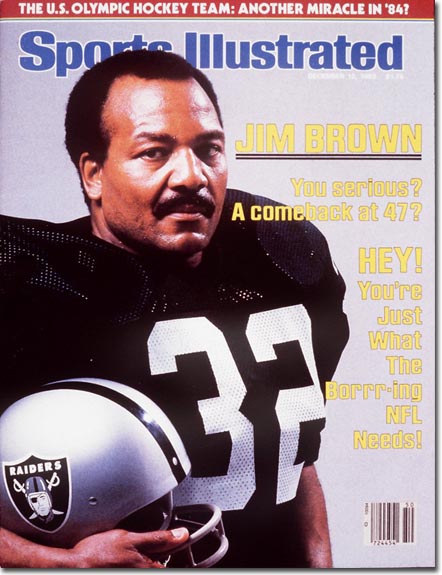 As the years passed and the NFL evolved, the man who left it with no regrets would periodically make public statements that sounded as if he might have some regret after all. The changes in the NFL were not for the better, in Jim Brown’s opinion. As running backs like Walter Payton and Franco Harris approached his career rushing record of 12,312 yards, Brown sounded off with his belief that the league had gone soft. He spoke of comebacks...of challenging Harris to a race in the 40-yard dash. Sports Illustrated put him on a 1983 cover in a Raiders uniform, but none of it was ever very serious.
As the years passed and the NFL evolved, the man who left it with no regrets would periodically make public statements that sounded as if he might have some regret after all. The changes in the NFL were not for the better, in Jim Brown’s opinion. As running backs like Walter Payton and Franco Harris approached his career rushing record of 12,312 yards, Brown sounded off with his belief that the league had gone soft. He spoke of comebacks...of challenging Harris to a race in the 40-yard dash. Sports Illustrated put him on a 1983 cover in a Raiders uniform, but none of it was ever very serious.
Brown respected Payton, and said he wouldn’t mind if Payton broke his record, which of course he eventually did. But Brown was merciless in his criticism of Harris, who retired before he could eclipse Brown’s mark. Brown was particularly irritated with the way Harris played the game, appearing to take it personally every time Harris ducked out of bounds at the sideline to avoid taking a hit. Jim Brown was well-known for delivering blows at the sidelines, for his slow deliberate walk back to the huddle, and his calm demeanor when he scored. Small wonder that the modern day trend toward self-preservation and self-celebration in the NFL got him going...
---
“Why would a 230 pound man run out of bounds? Why is everyone dancing, mugging for the camera? Where’s the danger in the game? Where are the characters and the warriors? You talk about records. Why even compare me to Franco? He played thirteen years. I played nine. He played something like fifty more games. Man gets four strikes to my three, where’s the significance? My performance spoke for itself. I don’t want to hear any shit about Franco.”
---
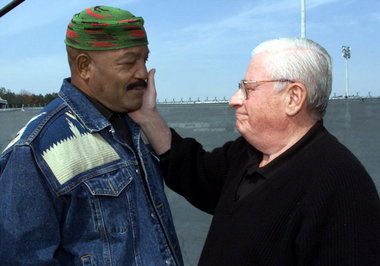 Brown reached out to Modell in 1984 to mend fences with the Browns organization, (although the photo at right is dated later than that) and there were kind words all around when the two got together to watch the Browns play a game. He returned to Cleveland in 1989 to promote his second autobiography Out of Bounds, meeting with Browns players and media as part of the trip. The rehabilitation of the relationship has been ongoing in fits and starts ever since.
Brown reached out to Modell in 1984 to mend fences with the Browns organization, (although the photo at right is dated later than that) and there were kind words all around when the two got together to watch the Browns play a game. He returned to Cleveland in 1989 to promote his second autobiography Out of Bounds, meeting with Browns players and media as part of the trip. The rehabilitation of the relationship has been ongoing in fits and starts ever since.
Today Jim Brown’s focus is on his Amer-I-Can program, targeted at turning around the lives of gang members and reducing gang violence, and the program has met with much success and acclaim. As he always has, Brown’s approach is first and foremost to talk to the people on the street. He has always been able to command the respect and gain the trust of young people, and he uses that basis to communicate hard truths to them.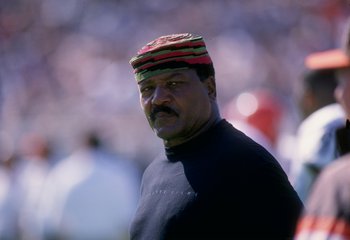 He has opened up his Los Angeles home to gang members who need a place to feel safe and cared for, and their presence has been a constant feature of his life there since. It’s hard to imagine a more generous and selfless act than that. This is no 9-to-5 gig.
He has opened up his Los Angeles home to gang members who need a place to feel safe and cared for, and their presence has been a constant feature of his life there since. It’s hard to imagine a more generous and selfless act than that. This is no 9-to-5 gig.
Begun in the late 80’s, the program took off after the 1992 gang riots in L.A. In recent years Amer-I-Can has helped broker truces and peace agreements between gangs that have had the very real effect of saving lives of blacks and Hispanics in South Central L.A., and the program has been expanded to other cities under Brown’s leadership. He had been active for years in economic development in the inner city, but Brown could see that, in Los Angeles at least, he had to put other priorities ahead of economics.
“I was doing economic development for minorities. I was getting black folks to use their dollars to help each other. I looked up and saw black men killing each other over red and blue. Until we did something about that, there was no use for economic development.”
A New York Daily News article sums up the core aims of the program:
The heart of the program is what Brown and Johnson simply refer to as “the curriculum,” a 15-lesson course Brown developed with sociologists and educators that encourages its students to examine their motivations and prejudices, gain control of their emotions, solve everyday problems and build family ties. The course also helps students find and keep jobs, as well as maintain financial stability. Brown says the curriculum is intended to counter the materialism and winner-take-all mentality that he sees in American culture. Money, he says, can’t buy inner peace.
Jim Brown...older, wiser, and still pushing to right wrongs, and inspire others to stand up for themselves.
---
“I have no trophies in my home. When I lay down, I think of all the experiences I’ve had and the respect I’ve gotten. That’s my glory”
---
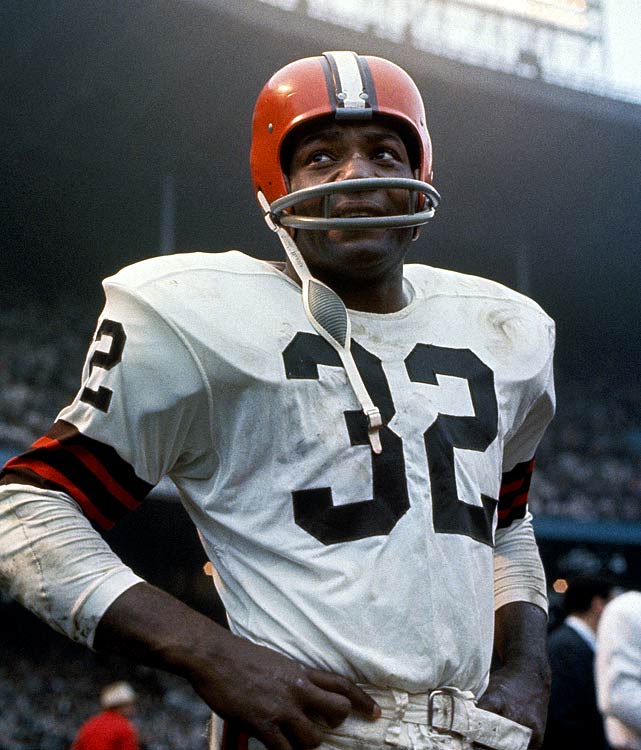 Jim Brown has said that he takes some satisfaction in being appreciated by generations of Cleveland Browns football fans. He appreciates the passing down from fathers to sons the love of the game, and the loyalty to a team. In many ways, I am that fan...having been on both the receiving and the giving end of that tradition.
Jim Brown has said that he takes some satisfaction in being appreciated by generations of Cleveland Browns football fans. He appreciates the passing down from fathers to sons the love of the game, and the loyalty to a team. In many ways, I am that fan...having been on both the receiving and the giving end of that tradition.
I’m not too proud to admit that Jim Brown was a boyhood idol of mine. He was the player every kid in the backyard game wanted to be, when we slogged around in the mud. On a half dozen or so occasions, when my dad was able to wangle some tickets, I got a chance to see Jim Brown play in person at Municipal Stadium as a kid in my pre-teen years of 9-12.
My enduring memory of those games is that every time Jim Brown touched the football, it was an event. If it looked like #32 was going to get the handoff...even before he got the ball, the crowd would rise to their feet, with a collective roar of anticipation that would continue until he was tackled...or not. The roar would subside, and they could return to their seats to await the next play.
The opponent, the score, and the time of the game were to some degree inconsequential. No one wanted to miss it if he went all the way, and everyone knew it could happen on any given play.
This profile has gone on way too long, but I hope that if Mr. Brown ever lays eyes on it, he will see it as it was intended...as a tribute to him by a Browns fan. For our readers, I hope it promotes understanding of one of Cleveland’s great sports icons...one with strengths and with flaws, like the rest of us.
And if it has not been obvious throughout, I will also say that my childhood awe of Jim Brown has evolved in my later years into a more genuine admiration of him for the selfless work he has done for decades to help his fellow man. For that, and for being the best player I have ever seen, I’ll just say....
Thanks, 32
---
Jim Brown - Pro-Football-Reference.com
---
on Twitter at @dwismar
- NBA Announces 2013-2014 Schedule
- Browns Ink Sharknado
- Sharknado A No-Show For Rookie Camp
- Trent Richardson Out Until Training Camp
- Browns Sign Brandon Jackson
- Carrasco Suspended Eight Games
- Browns Add to Wide Receiver Depth with David Nelson
- Browns Need to Learn from Past Draft Mistakes
- Browns Release Chris Gocong and Usama Young
- Browns Missing on Grimes Disappointing, But Not The End
The TCF Forums
- Chris Grant's first 3 drafts
Kingpin74 (Tuesday, January 21 2014 10:13 AM) - The 2014 Offseason Thread
googleeph2 (Tuesday, January 21 2014 9:36 AM) - 2015 Recruiting
furls (Tuesday, January 21 2014 6:57 AM) - Mike Brown
YahooFanChicago (Monday, January 20 2014 11:15 PM) - Movies coming out
HoodooMan (Monday, January 20 2014 9:34 PM) - 2014 Hoops Hockey Hijinx
jpd1224 (Monday, January 20 2014 4:44 PM) - 2014 Recruiting
jclvd_23 (Monday, January 20 2014 2:26 PM) - Wish List - #4 Pick
Hikohadon (Monday, January 20 2014 1:26 PM) - Official- Browns Coach Search/Rumors
OldDawg (Sunday, January 19 2014 6:48 PM) - #1 overall pick Anthony Bennett
TouchEmAllTime (Sunday, January 19 2014 1:28 PM)



